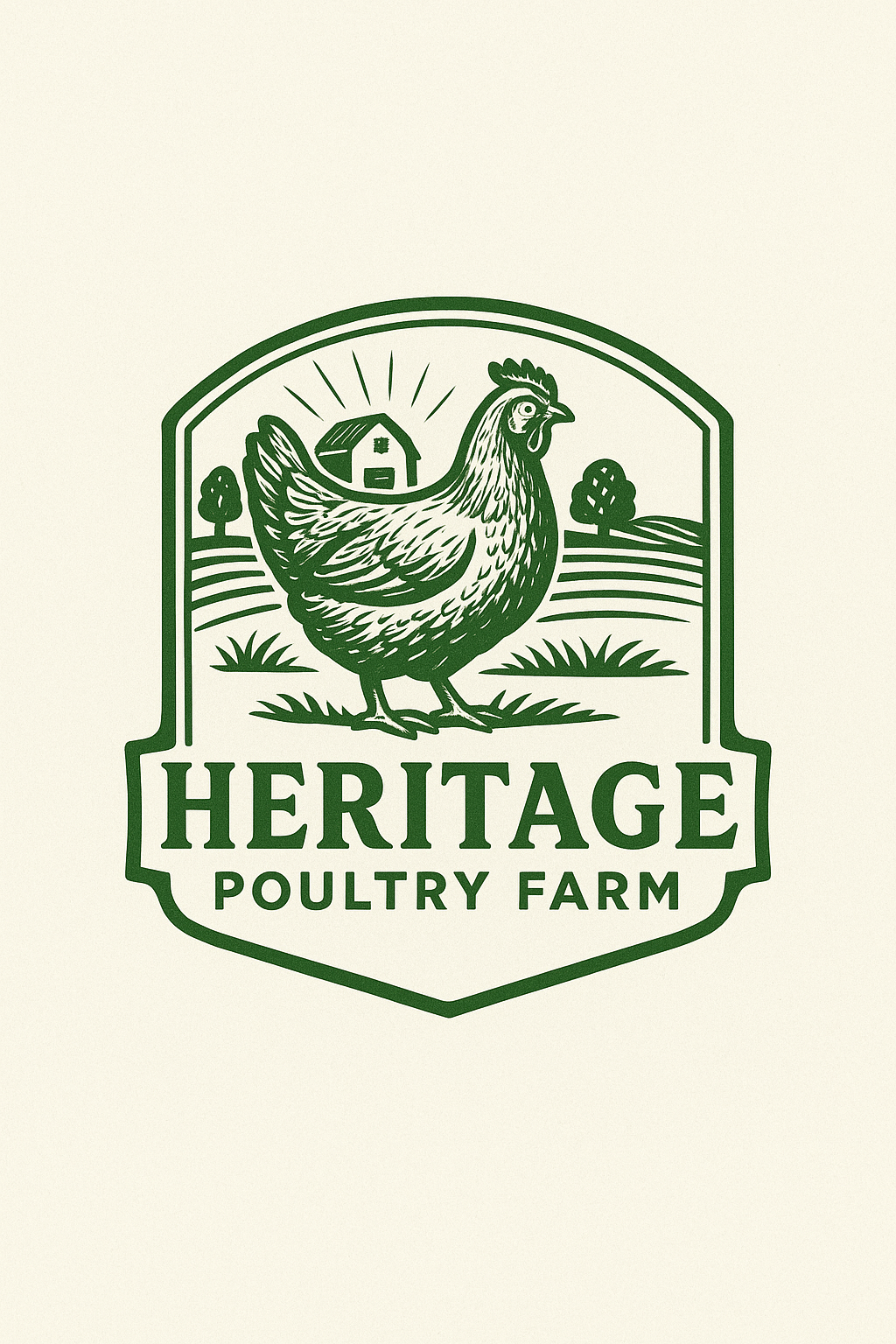Uncategorized
How to Care for Peacocks Year-Round: Feeding, Housing, and Health Tips
By Heritage Poultry Farm
Raising peacocks is more than a hobby — it’s a commitment to beauty, patience, and respect for one of nature’s most regal birds. Whether you’re just starting out or expanding your flock, understanding the basics of feeding, housing, and health care for peafowl is the secret to keeping them vibrant all year long.
Feeding Peacocks the Right Way
A healthy peacock begins with the right diet. Young peachicks need a high-protein starter feed for strong growth, usually around 28–30% protein in their early weeks. As they mature, the protein level should gradually decrease to about 18% to 20% for adults. A balanced peacock diet isn’t just about pellets — fresh greens like spinach or lettuce, small fruits such as apples or berries, and protein-rich treats like mealworms or scrambled eggs can make a real difference in feather quality and energy levels.
Peafowl also benefit from access to grit or crushed oyster shells, which aid digestion and help laying hens produce stronger eggs. Water is another often-overlooked necessity. Clean, cool water should always be available, and in hot weather, changing it more frequently helps prevent bacterial buildup. During molting or breeding seasons, their nutritional needs rise, so adding more protein and supplements can support feather regrowth and vitality.
Building the Perfect Peacock Home
Peacocks are large, graceful birds that need space to move, display, and explore. A small chicken coop won’t do — they require a roomy aviary or a large fenced area with at least 80 to 100 square feet per bird. Inside, they should have a dry, draft-free shelter with raised perches since peafowl prefer roosting high above the ground at night.
The floor of their shelter can be lined with straw, sand, or wood shavings, but it must stay dry to prevent disease. Regular cleaning goes a long way toward keeping your birds comfortable and healthy. Fencing should be sturdy and secure, buried a few inches into the ground to deter digging predators. Overhead netting can help protect them from hawks or owls, especially if you live in an area with plenty of wildlife.
Peacocks also enjoy variety in their surroundings. A few trees or shrubs in their enclosure provide natural shade, protection, and roosting spots. They love to dust bathe, so having a small area of loose dirt or sand helps them stay clean and parasite-free. These natural behaviors make for calmer, happier birds.
When it comes to weather, peacocks are surprisingly adaptable, but they still need some seasonal care. In winter, a well-insulated shelter and deep bedding help them stay warm. In extremely cold climates, a small heat source or windbreak may be necessary. During summer, shade and plenty of water are essential to prevent heat stress. Good ventilation, without direct drafts, is crucial all year round.

Keeping Peacocks Healthy
Healthy peafowl are active, alert, and have bright, glossy feathers. It’s important to observe your birds regularly to catch early signs of illness — things like loss of appetite, drooping wings, nasal discharge, or dull feathers often indicate a problem. Routine parasite control is key. External pests like mites and lice can irritate their skin, while internal worms can sap their strength. Cleaning their housing, rotating ground areas, and consulting a vet for periodic deworming keeps your flock in top shape.
Vaccinations may be recommended depending on your region, especially if your birds are around other poultry. A local avian veterinarian can help you decide which vaccines are right for your flock. During the molting season, peacocks shed many feathers and can appear tired or stressed. Their diet should be richer during this period, with added vitamins or supplements to support feather regrowth.
Behavioral care is another part of keeping them healthy. Male peacocks can become territorial during breeding season, so giving them enough space — and maintaining a balanced ratio of males to females — helps avoid conflict.
A Year in the Life of Peacocks
Caring for peacocks changes slightly with the seasons. Spring is when most owners prepare for breeding. It’s the time to clean enclosures thoroughly, inspect fences, and make sure nesting spots are dry and safe. Summer brings heat challenges, so shade, clean water, and pest checks become priorities. In autumn, you’ll prepare for the colder months ahead — adding dry bedding, repairing shelters, and adjusting feed for more energy. Winter is a time of quiet care, ensuring they stay warm, protected, and healthy until the days grow longer again.
The Reward of Raising Peacocks
At Heritage Poultry Farm, we believe peacocks are more than ornamental birds — they’re a living piece of art. Watching them spread their iridescent feathers in the sunlight or call across your property is something few experiences can match. They do demand effort, space, and time, but their elegance and character make every bit of it worthwhile.
If you’re considering adding peacocks to your farm or homestead, we have healthy, well-raised birds available throughout the year. Visit Our Poultry Farm to learn more about our current selection and expert advice on peacock care. With the right attention to feeding, housing, and health, you’ll have a flock that thrives in every season — and brightens your farm with their unmatched beauty.

